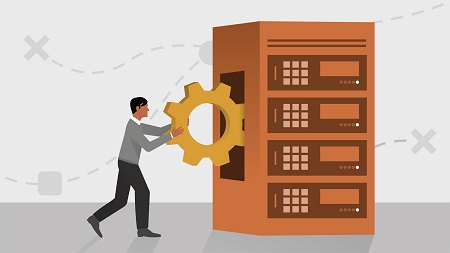
English | MP4 | AVC 1280×720 | AAC 48KHz 2ch | 1h 36m | 176 MB
What do you want Windows Server to do for you? Understanding the requirements of your server is one of the most important and overlooked aspects of the entire installation process. This course shows new system and network administrators how to plan the big picture and use that plan to install and configure Windows Server 2019. Instructor Scott Burrell explains how to identify and acquire the hardware—virtual or dedicated—you will need for your new server to accomplish its purpose: file server, domain controller, DNS/DHCP server, or virtual machine host. He then explains how to select the appropriate edition of Windows Server and install the core operating system. Finally, learn how to use the legacy admin tools as well as Windows PowerShell to configure network addressing, storage, features, and roles, so your server meets your organization’s needs. As an alternative to in-place upgrades, Scott also shows how migrate your roles and features to future servers with the Windows Server Migration (SMIG) Tools cmdlets.
Topics include:
- Planning the server hardware
- Installing Windows Server 2019
- Configuring NIC teaming
- Configuring storage
- Configuring roles
- Managing features on demand
- Migrating roles and features to other servers with SMIG
Table of Contents
1 Preparing to install Windows Server 2019
2 What you should already know
3 Planning the role(s) of the server
4 Planning server hardware
5 Purchasing Windows Server 2019
6 Virtualization and dedicated hardware
7 Installing from disk or an ISO file
8 Installing and upgrading
9 Using Server Manager
10 Initial configuration in PowerShell
11 Configuring multiple interfaces per network interface controller (NIC)
12 Understanding NIC teaming
13 Configuring NIC teaming
14 Creating different volume types
15 Supported file systems
16 Improvements to Storage Spaces Direct
17 Introducing Storage Migration Service
18 Planning role configuration
19 Installing roles and features
20 Configuring a role
21 Managing features on demand
22 Creating migration tools
23 Exporting and importing with SMIG
24 Next steps
Resolve the captcha to access the links!